Over time, the paintwork of the body ( LKP) loses its original brilliance and integrity under the influence of harmful chemical and biological environmental factors, mechanical damage. Defects are clearly manifested due to a violation of the technology for performing paint work, elementary rules for caring for a paint and varnish surface.
When is body painting required?
Defective paintwork not only negatively affects the “presentation” of the car, but also significantly weakens its protective properties that prevent the formation of corrosion foci and related problems.
The decay products of not removed in time traces from a collision of insects with a moving vehicle, bird or bee droppings, tree sap or resin, reacting with the components of the coating, are able to etch it up to the primer layer.
The same damage can be caused by man-made causes: ingress of technical fluids or materials ( battery acid, industrial dust, mortar, etc.).
Prolonged exposure to the above factors often leads to irreversible changes in the composition and appearance of the paint layer, and it is no longer possible to restore it by polishing the body - painting is indispensable.
A less common case - the car owner decides simply change the color of your car. It is worth recalling the legal side of the issue: it is necessary to collect a certain package of documents and visit MOTOTRER ( former MREO), to make appropriate changes to and STS.
In the case of elimination of serious mechanical damage due to an accident, the painting of the car is combined with work to restore the geometry or replace worn-out fragments.
After studying the price lists of car repair shops and finding out, how much does it cost to paint a car, in the head of any car owner, the question arises of how difficult it is to master the specialty of a car painter, minimizing material losses.
Do-it-yourself car painting, of course, a matter that requires certain skills and abilities, but it is quite within the power of an attentive and patient motorist with "hands and head". So, how to paint your own car
Logistics
To carry out the plan, you will need the appropriate equipment, a set of tools and materials. At the service station, where painting is put on stream, special technologies and expensive installations are used to perform individual or a whole range of works.
What should the mandatory arsenal of an amateur car painter include?

Equipment and tools
In a short review, there will be no link to prices: their range is quite wide, and depends on the region of sale and the manufacturer.
Airbrush (paint gun, spray gun).
How to choose a spray gun for painting a car? The optimal reading would be the presence of two or more spray guns: a good, trusted manufacturer ( Sata, Wagner, Bosch) - for working on large areas and critical fragments, and compact, simpler - for small areas, for applying a primer layer, varnish.
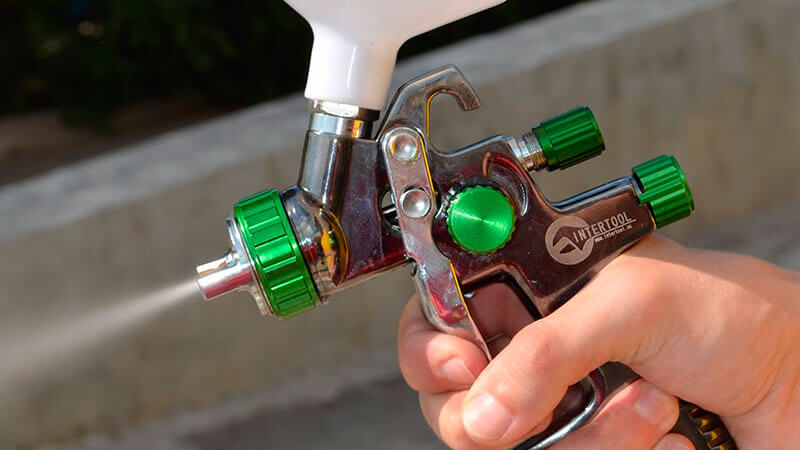
According to the principle of operation, spray guns can be divided into 3 categories:
- Mechanical, with manual drive. The most economical option, but only suitable for very modest volumes.
- Electrical. They are characterized by significant weight, high noise parameters and demanding quality and viscosity of paint mixtures. Positive moments - does not need a compressor, hoses and other accessories.
- Pneumatic. Operated by compressed air pressure from 1 to 6 atm.).
Considering the design features and technical parameters of the spray gun, they decide which compressor to choose for painting a car.
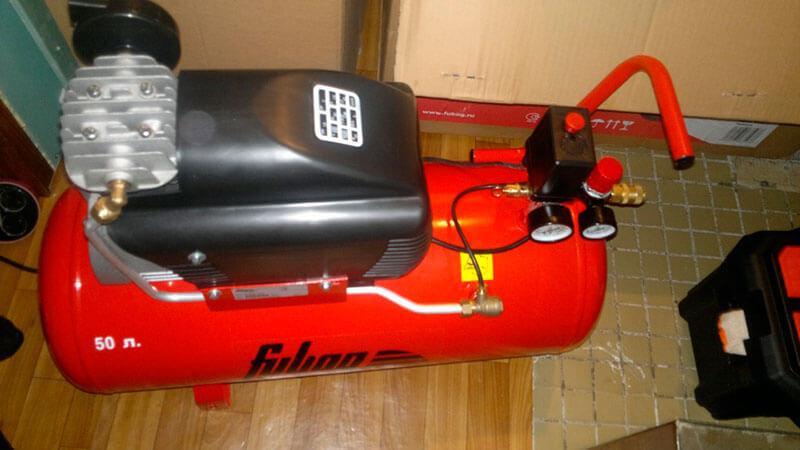
Pneumatic sprayers, in turn, are classified by working pressure. The most popular devices of the following paint spray systems:
- HVLP ( High Volume Low Pressure). The designs of such sprayers are more than 30 years old. The special configuration of the air channels allows the material to be sprayed at low pressure ( 0.7–0.8 atm.) at the output and high at the input ( 2.5–3 atm.). Advantages: performance, efficiency, lack of turbulence and experience. Disadvantages: high air consumption ( from 350 l/min), air ducts of increased diameter and moisture and oil separation filters are required. The performer requires experience and high professionalism.
- LVLP ( Low Volume Low Pressure). A relatively recent development, taking into account the shortcomings of the previous system. The pressure at the outlet and inlet, respectively, is 0.7–1.2 atm. and 1.5–2.0 atm., low air consumption ( 150–300l/min). Airbrushes are easy to operate and adjust, used by both specialists and amateurs.
An important characteristic of a spray gun is the size of the nozzle ( nozzles, nozzles). The diameter of the outlet is selected according to the type of sprayed material:
- Metallic base coat- 1.2–1.3 mm;
- Lacquer, acrylic paints, rough coat– 1.4–1.5 mm;
- Acrylic primer- 1.6–1.7 mm;
- Liquid putty- up to 2 mm.
Do-it-yourself compressor for painting a car must have a medium volume receiver ( from 50 liters), performance, power and pressure corresponding to the spray system of the atomizer.
If the device will be used intensively, it is better to give preference to a two-cylinder design with a belt drive - it has a longer resource and less noise.

Industrial dryer indispensable not only for drying the body after degreasing or cleaning, but also for dismantling plastic elements, moldings, removing stickers.
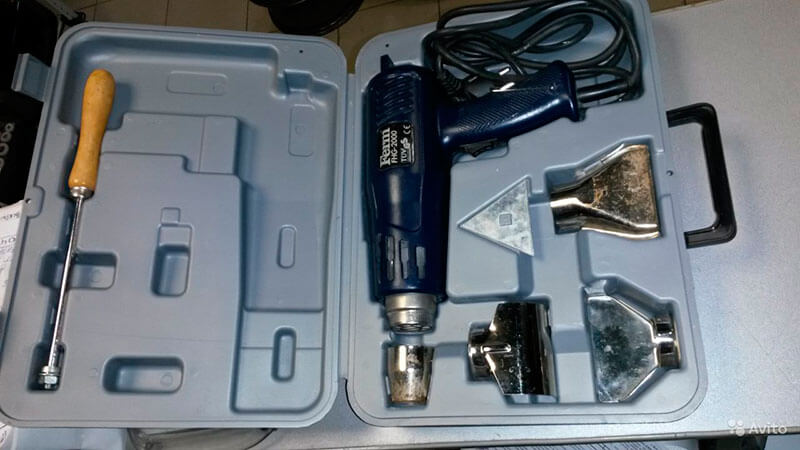
Portable spotlights on tripods provide the necessary level of illumination of the workplace, on which the quality of painting largely depends.
If lighting equipment is to be used for local heating and drying of treated areas, lamp power should not be less than 500-1000 watts.
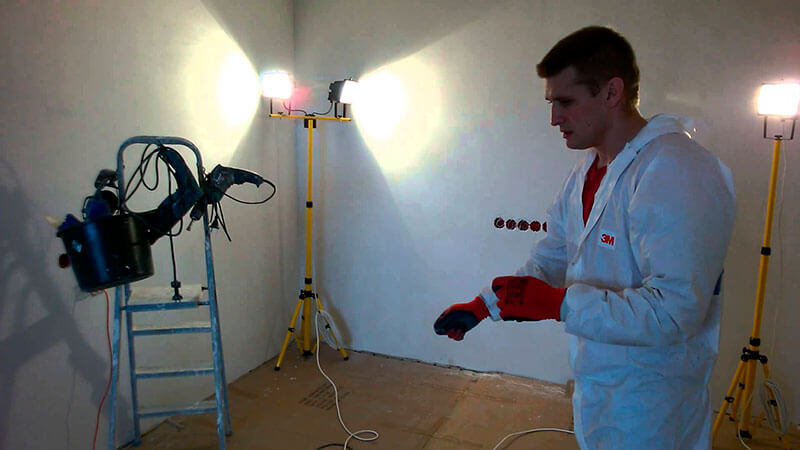
Grinding and polishing tools necessary at different stages of work: when removing corrosion, preparing the surface, intermediate processing of the applied layers, polishing at the final stage.
Required spatulas and a solid list of consumables- brushes, abrasive materials, vinyl drill bits, polishing pads, napkins and rags.
Do-it-yourself car painting technology involves the use of toxic substances and materials, so do not forget about the elementary protection of the respiratory tract and exposed skin from their harmful effects.
materials
To paint the body, three types of paints and varnishes will be required.
Primers ( epoxy, primers, sealants) lie directly on the metal surface, therefore they have excellent adhesion to the metal and subsequent layers, are not affected by solvents and high temperatures.
A good result is achieved by double or mixed priming - another type of primer is sprayed onto the applied layer. Products vary in composition one- and two-component, alcohol) and by the type of chemical interaction with metals ( passivating, inert, protective, phosphating). A layer with a thickness of 25–40 microns is considered optimal.
Appointment of putties ( filling, universal, reinforcing, finishing) - leveling of irregularities and surface defects before using primers and enamels. They have a doughy or pasty consistency. To eliminate small flaws, liquid putty is used. The layer thickness should not exceed 2–3 mm.
According to the method of painting, car paints can be divided into 3 types:
- Acrylic - characterized by a pronounced brilliance, resistance to external influences and ease of application. Dry quickly.
- Metallic - involves a two-layer application of components. The first layer contains a synthetic nitro paint of the desired color with a metallic effect, the second layer contains an acrylic varnish that performs protective functions.
- Special paints used for tuning and airbrushing, in the implementation of non-standard painting projects.
The component composition of enamels differs in viscosity, degree of fullness ( LS, MS, HS, VHS, etc.).
When counting, how much paint do you need to paint a car it is necessary to take into account the color of the primer, the technology of painting, the transfer factor of the spray gun, the hiding power and the color of the paint, but on average, 1 m 2 of surface will require from 200 to 250 ml.
Fortunately, the question before car owners is how to degrease a car body before painting, today is not worth it. The chemical industry produces a wide range of organic ( white spirit, trichlorethylene (fluoromethane), xylene) and traditional ( acetone, kerosene, gasoline) funds.
It is kerosene that is used at professional washing stations, and for a garage paint shop, the best choice would be special degreasers - anti-siliconeconsisting of a mixture of organic solvents with the lowest degree of toxicity.
car painting technology
Repair of vehicle paintwork differs in the degree of penetration depth and coverage of body elements:
- Local car painting– painting works on places of formation of corrosion, chips or scratches.
- Partial renovation– restoration of individual replaced or damaged body parts.
- Complex - painting the whole car with fragmentary or complete disassembly.
The essential and main advantage of local painting is the saving of material and time resources. With such a repair, the dismantling of elements is excluded, which does not lead to provoking the formation of corrosion foci.
The most important step is accurate selection of the required paint color. To do this, it is preferable to use the services of specialized companies that have the appropriate equipment and software ( DuPont, Mixit 2000, Profix, etc.).
With the right approach, local bumper painting without removal will give a 100% result - it will be impossible to visually find the difference between the repair and the factory coating. In any case, painting do-it-yourself bumper from a spray can or spray gun, the paint is applied in 2-3 layers with intermediate drying.
How to paint the bumper yourself with a spray can? Video:
The technology for painting autoplastics is somewhat different. Before painting the plastic parts of the car, they are dismantled. The difference lies in the range of materials used at the priming stage, but the procedure for carrying out the work remains the same.
Do-it-yourself painting of car interior plastic also has certain nuances. The duration and depth of processing depends on the degree of wear of the plastic surface. A network of small cracks is preliminarily subjected to additional grinding, chips and cracks are puttied.
When painting elements of complex shapes, sometimes the manual method of applying enamel justifies itself. Brush work provides the best adhesion, but requires speed, accuracy and precision.
Preparing a car for painting
Before how to prepare a car for painting, bring the place of future work into proper condition, for which:
- Perform a thorough cleaning, including washing the walls and even the ceiling, followed by drying. Not a single speck of dust should adversely affect the result of coloring.
- Carry out disinsection with household products ( for example, "Dichlorvos").
- Drape the walls and ceiling with plastic wrap to prevent drafts and penetration of the smallest particles.

The preparation of the car for painting begins with a thorough washing and drying of the car, identifying foci of corrosion and damage to the paintwork. If possible, decorative elements, galvanized parts, rubber gaskets are dismantled.
Unpainted parts are tightly closed with paper or cardboard stencils and fixed with masking tape. Sometimes, Vaseline, lubricants or protective paste are used to prevent paints and varnishes from getting on small surfaces.
At the first stage, the old paint is removed mechanically ( metal brush, scraper and appropriate electrified tool) or chemical ( acetone, xylene, paraffin in proportions 9:9:2) method and rust. The stage is completed by washing the body with a degreaser.
Then the surface is leveled with a straightening or putty, dried and treated with a solvent.
The next step is sanding and priming. The result should be a perfectly smooth and geometrically correct surface. Before proceeding directly to painting, the body is once again degreased and dried. The duration depends on the temperature and type of primer and varies from 2 to 24 hours.
Preparing to paint a car with your own hands, video:
How to paint a car with your own hands
Each master has his own paint application system, but the general rule is the movements of the spray gun must be accurate, uniform and accurate to avoid drips. The jet of paint is directed perpendicular to the surface.
The first layer is a test layer. With its help, areas that are not well processed during preparation appear.
The second layer is a dense coating, and the third is the fixation of the resulting shade. The interval between application is maintained for about 20-25 minutes. Complete drying will take 24-36 hours at 20˚C.
At the final stage, at least two layers of varnish are applied. At the same time, it is taken into account that the viscosity of the varnish, like the paint, for each subsequent layer should not be higher than for the previous one.
The painted and dried surface is polished without the use of abrasives.
Do-it-yourself car painting, video tutorial:
Paint defects
The main reason for the appearance of paintwork defects during self-painting, sadly, is the lack of professionalism and inexperience of the performer. The most common manifestations are:
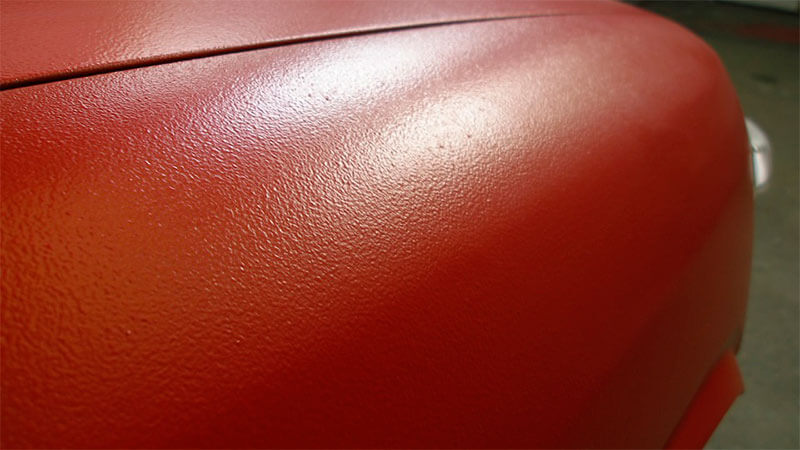
Illuminate all aspects and tell in detail, how to paint a car with your own hands, is possible only in a thick tome, half of which will be descriptions of laboratory and practical work, but patience, perseverance and diligence often create masterpieces.







